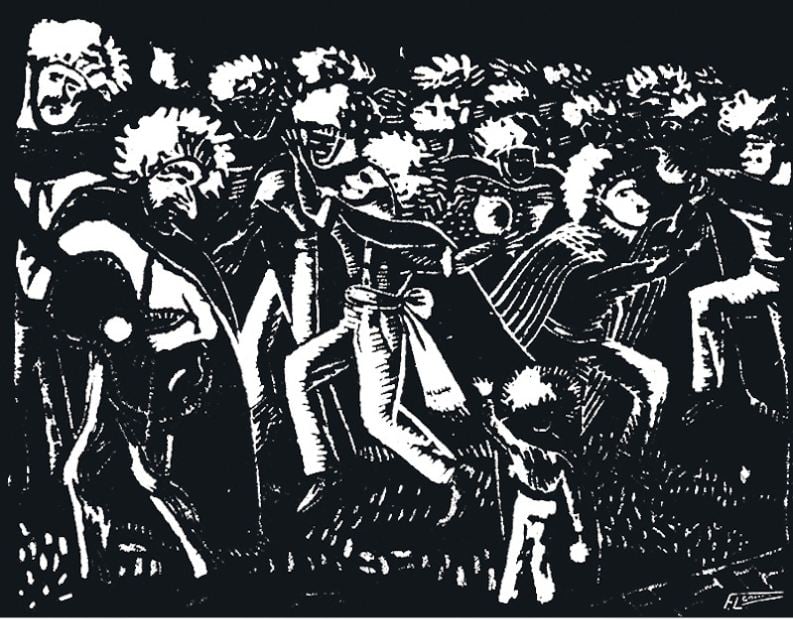Franco Lázaro Gómez Museum
A tribute to Chiapanecan identity through printmaking.

In the heart of Chiapa de Corzo, the Franco Lázaro Gómez Museum invites you to discover the work of this visionary artist—engraver, painter, sculptor, and carver. Through his prints—created in 1948 using exceptional technique—Franco Lázaro powerfully and sensitively captured the traditions, legends, daily activities, characters, and rituals of his hometown, including death as a part of life.
Franco Lázaro was the first Chiapanecan visual artist to depict local battles, myths, and experiences that few had recorded. For example, The Expedition to Bonampak is his last sketch before heading into the jungle, where he passed away.
He developed his work using woodcut, linocut, etching, lithography, and drypoint, demonstrating a remarkable mastery of chiaroscuro.
At the Franco Lázaro Gómez Museum, you can admire a valuable collection of wood and linoleum prints, murals, and original works that vividly portray everyday life, traditions, and iconic figures of Chiapa de Corzo. Each piece is a testament to the artist’s profound love for his homeland and a window into the cultural soul of Chiapas.
This museum is part of the Cultural Center Ex Convent of Santo Domingo, alongside the Lacquer Museum, and it preserves more than just art—it safeguards the living memory of Chiapa de Corzo. In addition to prints and murals, personal objects of the artist are exhibited, enriching the cultural heritage of the space.
Among his works you can find:
The Parachico Mask: an emblematic print representing the traditional local character.
Andaluza: a monochromatic graphic piece.
Beer Bottle: a print or mural painting filled with nostalgia and everyday life.
The Fiesta of Chiapa de Corzo: a print capturing moments and rituals unique to the local community.
Landscapes and Traditions: works such as The Farmer, Ceiba and Fountain, María de Angulo, and Cebollera reflect both the rural environment and emblematic characters.
Since November 1996, the museum has been officially part of the Cultural Center, becoming a key point for those seeking to understand the soul of Chiapas through popular art.